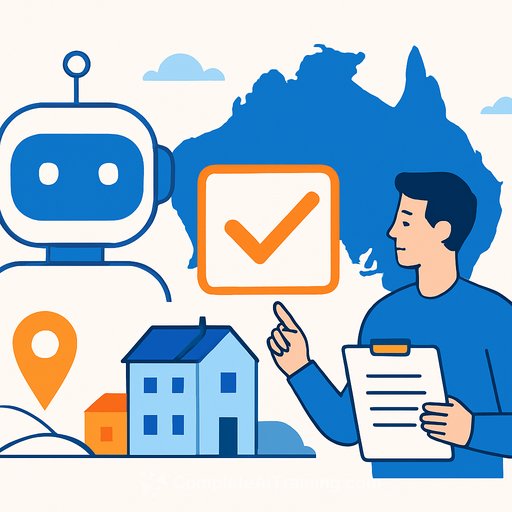AI could fast-track Australia's next housing boom
There's real momentum building across planning and construction. The Housing Industry Association (HIA) projects that applying AI to planning approvals could help unlock 1.2 million homes over the next five years. That's the kind of throughput the market needs to close the supply gap.
The bottleneck is clear: thousands of applications sit in queues, capital is idle, and projects miss market windows. AI can pre-check documentation, assess development applications against policy, and manage post-submission validation before a planner reviews the file. Faster decisions, clearer feedback, fewer resubmissions.
Proof on the ground
New South Wales council trials have already turned around some approvals in as little as two days-processes that usually take months. The state is targeting fully operational AI planning systems by the end of 2025, as referenced by the HIA.
At the federal level, a dedicated "strike team" is prioritising approvals. The direction is set: speed up supply without sacrificing compliance.
Housing Industry Association (HIA) | NSW Planning Portal
Where AI adds value in the approvals workflow
- Application completeness checks: required documents, formats, signatures, fees, and consultant reports.
- Policy and code assessment: zoning, use, FSR, height, setbacks, overshadowing summaries, heritage and flood overlays.
- Geospatial and services context: proximity checks, overlays, and basic network capacity flags (with planner verification).
- Automated RFIs: clear, itemised requests with policy citations, due dates, and portal updates.
- Draft consent conditions: standardised conditions mapped to the applicable controls.
- Conflict and duplication detection: spot inconsistencies across plans, reports, and schedules.
- Triage and forecasting: route low-risk, code-assessable DAs; estimate timelines and workload.
- Transparent status updates: applicant view of what's outstanding and why.
What this means for builders, developers, and investors
- Shorter lead times mean lower holding costs and tighter construction scheduling.
- Fewer rework loops and clearer RFIs reduce risk and consultant burn.
- A steadier release of stock improves pipeline reliability and sales planning.
- Councils gain audit trails and consistency, which lifts confidence across the market.
Implementation checklist for councils and project teams
- Start where risk is low and volume is high: single dwellings, code-assessable alterations, minor works.
- Map the current workflow and SLAs; set baseline metrics (median approval time, first-time-right rate, RFI count).
- Get the data ready: structured DA forms, standard file naming, machine-readable checklists, and portal APIs.
- Use a layered approach: rules engine for black-and-white controls + LLM for summaries and drafting; always keep human sign-off.
- Build guardrails: policy libraries with citations, retrieval-augmented answers, reason codes, and change logs.
- Security and compliance: data residency, privacy controls, role-based access, and full audit trails.
- Change management: planner training, applicant guidance, and clear communications on what AI does and doesn't do.
- Pilot, measure, expand: iterate by project type and complexity as accuracy and trust improve.
Risks to manage (before they manage you)
- Accuracy: require source citations and side-by-side policy extracts for every automated check.
- Bias and consistency: test across diverse LGAs and project types; monitor drift.
- Accountability: planners keep final authority; AI outputs are recommendations, not determinations.
- Vendor lock-in: demand open formats and API access so systems can interoperate.
- Public trust: publish service metrics and decision frameworks to reduce ambiguity.
Move now to capture the upside
Prepare applications to be machine-readable: clean naming conventions, layered PDFs, vector-based plans, and structured schedules. Answer RFIs fast and completely; it keeps you in the fast lane.
Upskill your team to brief AI systems well and review outputs with a compliance mindset. If you need a curated path for construction and property roles, see the job-based programs at Complete AI Training.
The takeaway
AI won't replace planners. It will clear the queue so specialists focus on judgement, not admin. If the sector executes, 1.2 million homes in five years moves from aspiration to schedule.
Your membership also unlocks:






